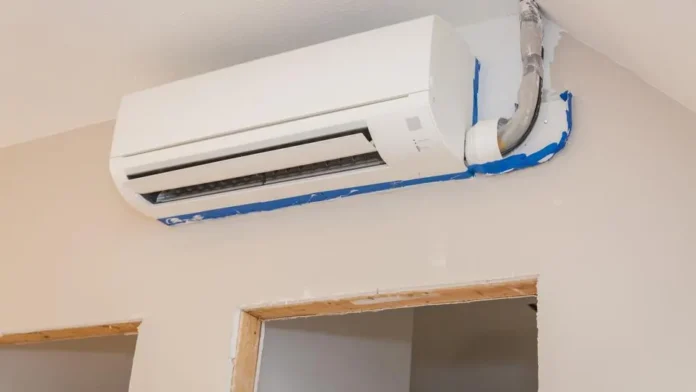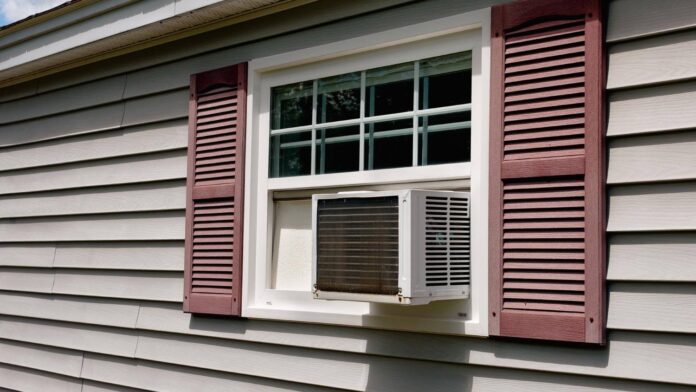With the heat of summer just around the corner, finding an efficient and cost-effective cooling solution for your home is a top priority. Choosing between a mini split or window unit can be challenging due to their varying features and benefits.
In this blog post, we’re going to break down the key differences between these two popular air conditioning systems – mini split vs window units. We’ll compare size and placement, energy efficiency, installation process, and cost considerations.
By evaluating factors such as room size and layout, budget constraints, long-term usage plans, and maintenance requirements – we’ll help you determine which option is right for your specific needs.
Mini split vs window unit: Key differences

Mini split units are typically larger and require professionals like Anderson Air to install them, while window units can be easily installed by the homeowner.
Size and placement
One of the most noticeable differences between mini split and window units is their size and placement within your home. Mini split units are made up of two main components: an outdoor compressor/condenser that sits unobtrusively outside, and one or more compact indoor air handling units mounted high on the wall or ceiling.
These indoor units are typically sleek in design, taking up minimal space while providing optimal cooling performance.
The placement options for both systems can have a huge impact on your home’s aesthetics and overall comfort levels. For instance, mini split systems offer greater flexibility when it comes to installation locations, which means you can target specific areas in need of cooling without obstructing windows or natural light sources.
Window units may restrict this flexibility due to limited installation options; however, they still provide effective cooling solutions at a lower cost for homeowners who prioritize affordability over seamless integration with their living spaces.
Energy Efficiency

Another vital aspect to consider when choosing between mini split and window units is energy efficiency. Both options can save you money in the long run, but there are important differences to note.
When comparing mini split vs window unit efficiency, mini split systems tend to be more energy-efficient. This is because they use inverter technology that adjusts the compressor speed based on the cooling needs of your room, resulting in less energy consumption.
On the other hand, window units may not be as efficient since they only have two settings: off or on at full power. However, some newer models come with features like Energy Star certification or smart thermostats that help reduce energy usage by automatically adjusting temperature settings or turning off when no one is around.
Installation Process
One of the significant differences between mini split and window units is the installation process. Window units are relatively easy to install, requiring no professional help in most cases.
On the other hand, mini splits require professional installation due to their complexity. The process requires the installation of an indoor unit on a ceiling or wall. It is then connected to a unit outdoors through a little drilled hole in the wall.
This requires specialized skills and equipment that only certified technicians possess.
While installing a mini-split can be daunting, it’s important to note that they offer greater flexibility with placement options since they don’t necessarily have to go near windows like window units do.
While both mini split and window units can cool your home effectively, homeowners should keep in mind how each system will be installed before deciding based on convenience or budget constraints as well as energy efficiency concerns over time.
Cost
When deciding between a mini split ac vs a window unit, another major factor to consider is cost. Generally, mini splits are more expensive upfront than window units, but they can provide energy savings in the long run due to their high efficiency.
Consider your budget and long-term usage when making this decision. You may also want to factor in any potential maintenance costs for both types of systems down the line.
Which one should you choose? Factors to consider
When considering whether to go for a mini split vs window unit, factors like room size and layout, budget, long-term usage, and maintenance should be taken into account.
Room size and layout
The size and layout of the room you want to cool is a crucial factor when deciding between a mini-split or window unit. Window units are ideal for small rooms because they produce less cooling power compared to mini-splits.
If you have more of an open-concept living room and kitchen area, a mini-split could maintain comfortable temperatures in both areas without having to install two separate window units.
Additionally, if your windows can’t accommodate the size of the unit needed for your room’s square footage, then a ductless unit might be the way to go.
Budget
Budget is an important factor to consider. The initial cost of a mini split can be higher than that of a window unit, but over time, the energy-saving capabilities could justify its cost.
However, it’s essential to note that opting for the cheaper option doesn’t always mean you’re getting the most for your money. A high-quality mini-split system may have an upfront cost but could save you more money on utility bills in the long-term compared to using multiple window units throughout your home.
Long-term usage and maintenance
Another thing to consider when choosing between a window unit vs a mini split is their long-term usage and maintenance. Mini splits are known for their longevity, with an approximate lifespan of 20 years or more when properly maintained.
They also require minimal upkeep, with just annual cleanings and filter replacements needed. When it comes to energy efficiency, both mini splits and window units can help reduce utility bills over time.
It’s important to weigh these factors along with room size/layout and budget before making a decision on which cooling solution is best suited for your home.
Conclusion – Mini split vs window unit: The verdict

When choosing between a mini split and window unit for your home, it will depend on your specific needs and preferences. Mini splits are ideal for larger rooms or homes that need consistent cooling in multiple areas while window units can be more cost-effective and easier to install in smaller spaces.
Keep in mind factors such as room size and layout, budget, long-term usage, energy efficiency, maintenance requirements, noise level and installation process before making your decision.









